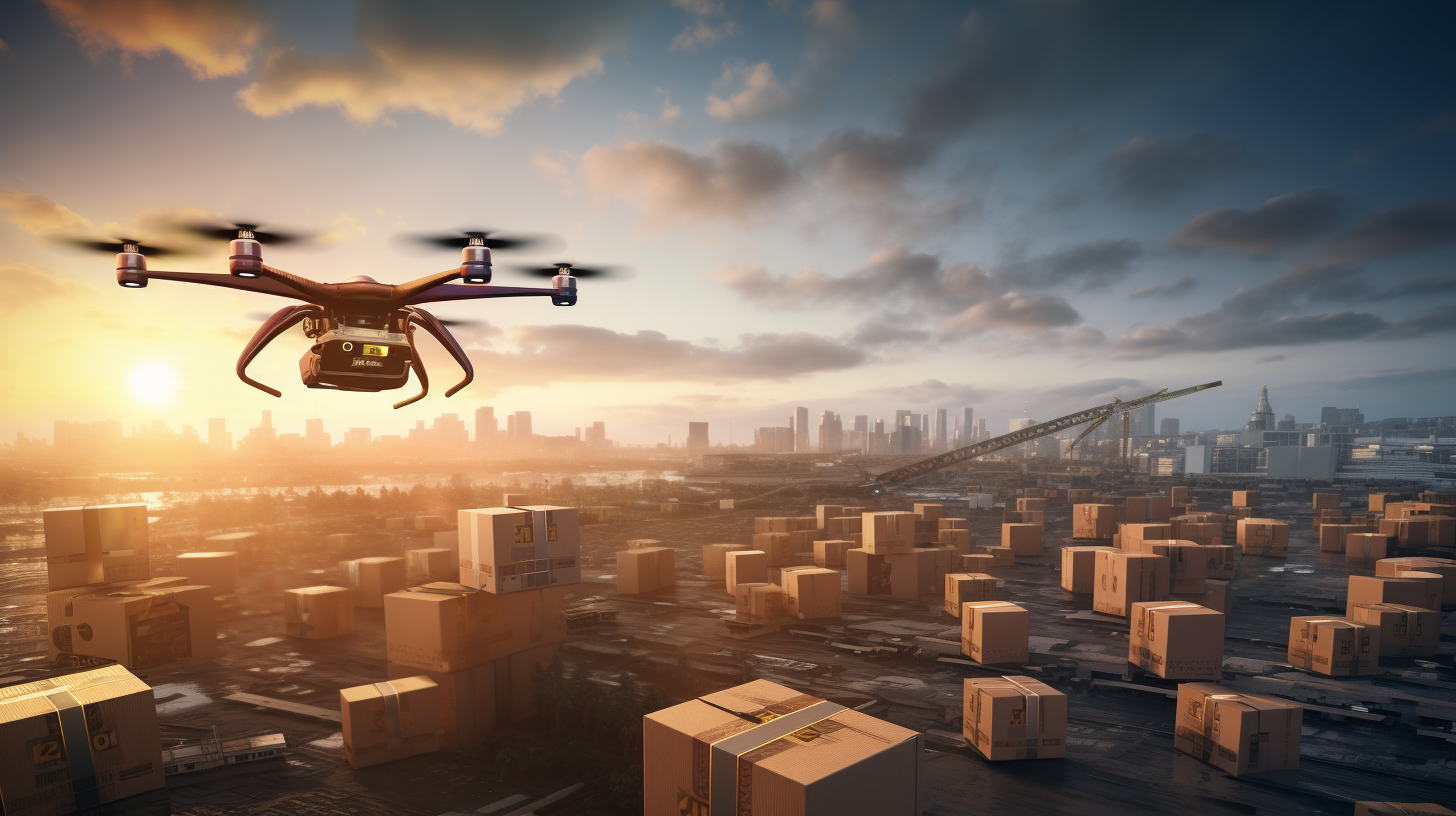Imagine a world where the bustling city streets and freeways are eerily devoid of delivery trucks, a world where the quiet whir of quadcopter blades, carrying parcels from sky-high warehouses to the welcoming drones on your doorstep, is the new soundtrack of e-commerce. This isn’t a fanciful dream; it’s the dawn of a reality where cryptocurrency and drone technology converge, creating a symphony of automated logistics.
In this groundbreaking fusion of tech, drones have become the couriers of choice in a society that operates on digital currencies. Gone are the days of fuel-guzzling, traffic-congesting delivery vans. In their place are drone fleets, each unmanned aerial vehicle (UAV) deftly maneuvering through the air with packages destined for global doorsteps, their operations rendered seamless by the trustless ledger that is blockchain.
The benefits of this partnership are manifold. Drones can reach remote areas where traditional delivery services might pass by. They cut down on pollution and traffic, keys to a greener, smarter city. Yet they require sophisticated navigation and payment systems – where crypto, with its innate security and decentralization, shines. A successful delivery is immediately followed by an automated crypto transaction, a proof-of-delivery inscribed upon the blockchain, irrefutable and instant.
However, the masterstroke in this logistical marvel comes from smart contracts. Imagine a system where delivery drones are not just automatons following GPS coordinates, but agents governed by pre-set contracts that account for weather, recipient availability, and payment completion in real time. If a customer isn’t home, the drone knows to reroute, to reschedule, or even to find a secure drop-box, thanks to the intricate web of if-this-then-that conditions coded into its blockchain brain.
But no path is without its bumps. Regulatory frameworks struggle to keep pace with the exponential growth of UAVs in the skies. The threat of a ‘wild west’ airspace looms, with potential privacy and safety concerns. This knee-jerk worry shadows the significant strides being made in anti-collision software, GPS precision, and the development of eccentric new air traffic control systems optimized for drones.
Envision a ‘crypto-city’ skyline, where shipping routes are plotted not by human hands but calculated with the razor-sharp efficiency of algorithms. Drones, empowered by crypto, forge a web across the city, making delivery routes more efficient, packages tracked effortlessly along the blockchain, each transaction sparking another, in an intricate dance of economics and technology that leaves traditional logistics a time-lost memory.
The implications for businesses are staggering. A decentralized network of drones means lower overheads, access to wider markets, and the ability to leverage advanced data analytics for predictive delivery strategies. Equally massive is the level of customization available to consumers, who can now adjust delivery parameters in the blink of an eye, knowing that the drone will adapt to their needs – all while enjoying the reduction in costs and delivery times.
With an eye to the future, innovators are fast tracking the evolution of UAVs. Some even posit the existence of autonomous drone ‘hubs’ where UAVs could self-manage, self-repair, and coordinate logistics without a human in sight, going beyond delivery to integrate aspects like environmental monitoring and emergency response – a multifaceted drone service marketplace, all sustained by the precision and integrity of crypto transactions.
So, as you gaze into the night sky and catch the flicker of red and green LED lights crisscrossing above, consider the unsung ballet of logistics at play. Drones and crypto have ignited a new wave of automated logistics – one we are only beginning to grasp, even as it redefines the skies of our ‘crypto-dominated’ world.
